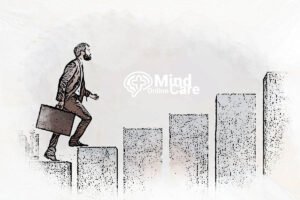In our most connected era, technology offers countless benefits – from easy communication to global access to information. However, excessive technology use can lead to unintended consequences that impact our well-being. Research has linked frequent tech usage to attention-deficit symptoms, impaired emotional intelligence, and social isolation. A digital detox might be the solution we need to reclaim our focus, sleep, and real-world connections. But is it really that simple? What are the underlying factors driving our reliance on digital devices, and how can we break free from these habits?
Key Takeaways
- The average U.S. adult spends around 11 hours each day engaged with media, highlighting the need for balanced technology use.
- Heavy technology use, especially among young adults, has been linked to sleeping problems, depressive symptoms, and increased stress levels.
- Limiting social media use can significantly improve well-being by decreasing symptoms of loneliness and depression.
- Digital detoxes offer benefits like sharper focus, reduced stress, better social interactions, and improved time management.
- Recommendations for a successful digital detox involve setting clear goals, committing to it, and considering long-term changes to digital habits.
Understanding Digital Overload in Modern Life
In today’s digital age, it’s no secret that we’re facing an unprecedented level of information and technology overload. The constant connectivity through smartphones, social media, and other digital screens can take a significant toll on our mental and physical well-being. Research indicates that excessive technology use can interfere with essential activities like sleep, exercise, and socializing, leading to a host of unintended consequences.
Studies have linked frequent tech use to attention-deficit symptoms, impaired emotional intelligence, and stress management challenges. The impact of digital overload can vary, with active social media interactions potentially building connections, while passive scrolling may have more negative effects. The average person now spends up to 11 hours a day on their digital devices, and teenagers and young adults spend even more time on their screens.
Excessive screen time has been associated with mental health issues such as anxiety, depression, and sleep problems. The blue light emitted by electronic devices can suppress melatonin production, disrupting circadian rhythms and leading to sleep disturbances. Furthermore, social media use and social comparison can contribute to feelings of depression and anxiety, with the fear of missing out (FOMO) being a common issue among users.
| Statistic | Percentage |
|---|---|
| Individuals experiencing increased stress and anxiety levels due to information overload | 76% |
| People struggling with maintaining a healthy sleep cycle because of constant digital connectivity | 88% |
| Individuals finding it challenging to concentrate on tasks due to the abundance of information sources | 65% |
| Individuals reporting a negative impact on their self-esteem due to social media comparison and exposure to highlight reels | 82% |
| Individuals showing improved mental clarity and reduced stress levels after engaging in a digital detox | 93% |
To combat the negative effects of digital overload, it’s crucial to prioritize self-care, regular exercise, quality sleep, and spending time with loved ones. Setting clear boundaries on technology use, practicing mindfulness, and engaging in healthy habits can help promote good mental health and mitigate the impact of excessive screen time.
Signs You Need a Digital Detox
In our fast-paced, technology-driven world, it’s easy to become overwhelmed by the constant digital stimuli. However, excessive screen time and digital dependency can have significant consequences on our mental health and overall well-being. Here are some key signs that indicate the need for a digital detox.
Physical Symptoms
Prolonged screen time can lead to various physical symptoms, such as disrupted sleep patterns, eye strain, headaches, and even increased body mass index. Research notes that frequent technology use has been linked to heightened attention-deficit symptoms, impaired emotional and social intelligence, technology addiction, social isolation, impaired brain development, and disrupted sleep in some cases.
Psychological Indicators
On the psychological front, excessive digital consumption can contribute to anxiety, depression, and decreased overall well-being. A study from 2021 found that students who completed a social media detox reported positive changes to their mood, sleep, and anxiety. Similarly, another study found that women who quit Instagram reported higher life satisfaction and more positive effects than women who continued using the social media app.
Behavioral Changes
Behavioral changes, such as compulsive device checking, preoccupation with social media metrics, and difficulty concentrating without constant digital stimulation, can all be signs that it’s time to consider a digital detox. The average Australian spends four hours of their spare time each day watching TV or using devices, which amounts to about 25% of their waking hours.
If you find that technology is interfering with your work, relationships, mental health, or overall quality of life, it may be time to take a step back and reassess your digital habits. Improving sleep quality can lead to improved mental health, with statistics showing sleep as a crucial factor in managing anxiety and depression.
By recognizing the signs and taking proactive steps towards a digital detox, you can regain control over your technology use and prioritize your mental health and well-being.
The Science Behind Digital Addiction
While not formally recognized as a disorder in the Diagnostic and Statistical Manual of Mental Disorders (DSM-5), many mental health experts believe that excessive technology use represents a real behavioral addiction. Studies have shown that heavy technology use, particularly among young adults, is linked to a range of concerning mental health issues, including sleeping problems, depressive symptoms, and increased stress levels.
Research on adolescents indicates that excessive daily technology use is associated with an increased risk for mental health problems, such as attention-deficit/hyperactivity disorder (ADHD) symptoms and conduct disorders. The constant connectivity facilitated by digital devices can make it challenging to create clear boundaries between work and personal life, which can negatively impact overall job satisfaction and work-life balance.
The science behind digital addiction is complex, involving factors like operant conditioning, the reward-deficiency hypothesis, and maladaptive cognitions. Impulsivity and poor social skills are also risk factors that can contribute to compulsive technology use as a means of psychological escape or relationship development. Fortunately, studies have shown the efficacy of psychosocial interventions, such as cognitive-behavioral therapy (CBT) and motivational enhancement therapy, in addressing technological addictions.
- Learning theory emphasizes the positive reinforcing effects of technological use, which can induce feelings of well-being and euphoria in the user, working on the principle of operant conditioning.
- The ‘reward-deficiency hypothesis’ suggests that individuals turn to technology for enhanced stimulation due to achieving less satisfaction from natural rewards like food, water, or sex.
- Impulsivity is a risk factor for addiction; internet use is linked to sensation-seeking behavior, which is a sub-trait of impulsivity.
- Catastrophic thinking contributes to compulsive internet use as a psychological escape mechanism to avoid real or perceived problems.
- Individuals with poor social skills may turn to technology for developing relationships in less threatening circumstances than face-to-face interactions.
By understanding the science behind digital addiction, we can better address the growing mental health concerns associated with excessive technology use and develop effective strategies for achieving a healthier relationship with our digital devices.
“65% of Americans somewhat or strongly agree that periodically ‘unplugging’ or taking a ‘digital detox’ is important for mental health.”
Self-Help Strategies, Healthy Technology Use, Mental Health
In our fast-paced, digitally-driven world, maintaining a healthy relationship with technology is essential for our mental well-being. Fortunately, there are various self-help strategies, mindfulness practices, and boundary-setting techniques we can adopt to strike a balance and prioritize our mental health.
Mindfulness Practices
Engaging in mindfulness practices can help us stay present and reduce the stress and anxiety that often accompany constant connectivity. By learning to focus on the here and now, we can cultivate a greater sense of calm and clarity. Practices like meditation, deep breathing exercises, and mindful walking can all be effective in helping us regain control over our attention and digital habits.
Boundary Setting
Establishing healthy boundaries around our technology use is crucial for maintaining a healthy work-life balance and nurturing genuine connections. This may involve setting limits on phone usage during meals, before bedtime, or while spending time with loved ones. By creating these boundaries, we can create more space for meaningful offline activities and relationships, which research suggests can significantly improve our overall well-being.
Remember, incorporating self-help strategies, mindfulness techniques, and healthy boundaries into our daily lives is a journey. It may take time and experimentation to find what works best for us, but the benefits to our mental health and overall quality of life are well worth the effort.

“Mindfulness is simply being aware of what is happening right now without wishing it were different; enjoying the pleasant without holding on when it changes; being with the unpleasant without fearing it will always be this way.” – James Baraz
Creating a Personalized Digital Detox Plan
As modern life becomes increasingly entwined with digital technologies, it’s essential to take a proactive approach to managing our self-care routines and unplugging habits. Creating a personalized digital detox plan starts with assessing our current technology use and its impact on our well-being.
Begin by tracking your daily screen time and evaluating how technology makes you feel. Are you experiencing any physical symptoms, such as eye strain or headaches? Do you notice psychological indicators, like increased anxiety or difficulty concentrating? Observe any behavioral changes, such as difficulty sleeping or a sense of disconnection from loved ones. These insights will help you identify problematic areas and set meaningful goals for your digital detox.
Consider your priorities and values to ensure your tech habits align with your overall well-being. Set specific, achievable goals for your digital detox, such as limiting social media use to 30 minutes per day or taking a weekend off from screens. Mention the expected benefits, and commit to a timeframe, whether it’s a week or a month, depending on the depth of your digital habits.
To increase the chances of success, prepare strategies to bypass attention-capturing features, such as disabling notifications or using website blockers. Enlist the support of family or friends as accountability partners, as their encouragement can make a significant difference in your journey towards healthier digital wellness.
By creating a personalized digital detox plan, you’ll take the first step towards reclaiming control over your time, attention, and overall well-being. Embrace the opportunity to unplug, reconnect with the physical world, and rediscover the joy of truly being present in your own life.
Implementing Healthy Digital Boundaries
Maintaining a healthy balance between our digital and offline lives is crucial in today’s technology-driven world. By implementing strategic routines and practices, we can establish healthy digital boundaries that support our overall well-being. Let’s explore how to integrate these into our daily lives.
Morning Routines
Start your day on a mindful note by avoiding the temptation to immediately check your digital devices upon waking. Instead, focus on grounding offline activities that nourish your mind and body, such as meditation, journaling, or a light workout. This sets the tone for a more intentional and productive day, free from the distractions of constant notifications.
Evening Practices
In the evenings, create a soothing digital wind-down ritual. Turn off notifications, silence your devices, and avoid screen time in the hours leading up to bedtime. This allows your mind and body to transition into a state of relaxation, promoting better sleep quality. Consider implementing a “device-free” zone in your home, encouraging real-world interactions and engagement with hobbies or loved ones.
Throughout the day, set specific times to check messages or social media instead of responding to every alert. This prevents constant digital interruptions and allows you to be more present in the moment. You can also experiment with leaving your phone behind during certain activities, such as meals or exercise, to minimize distractions and foster deeper connections.
By establishing these Healthy Boundaries and Self-Care Routines, you can reclaim control over your digital life and cultivate a healthier, more balanced lifestyle. Remember, balance is key – with a little intentionality, you can harness the benefits of technology while preventing its negative impacts on your overall well-being.
“The greatest weapon against stress is our ability to choose one thought over another.” – William James
Rebuilding Real-World Connections
In our increasingly digitalized world, it’s crucial to prioritize rebuilding real-world connections for our overall well-being. Excessive device use can lead to social isolation and impaired Emotional Intelligence, which can negatively impact our Mental Health Awareness. To combat this, we must focus on engaging in face-to-face interactions and participating in offline activities.
Spending quality time with friends and family without digital distractions can help reduce the fear of missing out (FOMO) often associated with social media use. Engaging in hobbies, sports, or volunteer work can create meaningful real-world experiences and connections, which can enhance our overall well-being and social skills.
“Connecting with others in the real world is essential for our mental health and personal growth. It helps us develop empathy, compassion, and a deeper understanding of ourselves and the people around us.”
According to recent statistics, over half of the population in the United States owns a smartphone, and 83% of smartphone users do not leave their homes without their devices. This constant connectivity can come at the expense of face-to-face interactions, leading to a decline in social skills and emotional intelligence. By prioritizing real-world connections, we can counteract the negative effects of digital overload and improve our overall mental well-being.
- Set aside dedicated time for in-person gatherings with friends and family, free from digital distractions.
- Engage in hobbies and activities that encourage face-to-face interactions, such as joining a local sports league or volunteering in your community.
- Explore new experiences, such as taking a cooking class or attending a local art exhibit, to expand your social network and create meaningful connections.
- Practice active listening and empathy during conversations, focusing on the person you’re engaging with rather than divided attention.
- Seek out opportunities to volunteer or participate in community events, which can foster a sense of belonging and social support.
By rebuilding real-world connections, we can nurture our Emotional Intelligence and enhance our overall Mental Health Awareness. This, in turn, can lead to a more fulfilling and balanced life, both online and offline.
Maintaining Long-Term Digital Wellness
Achieving digital wellness is an ongoing journey, not a one-time event. To maintain long-term healthy relationships with technology, we must cultivate sustainable habits and regularly track our progress. After the initial digital detox, reflect on the experience and decide on the changes you want to make permanent.
Sustainable Habits
Incorporate the following habits into your daily routine to support your digital wellness:
- Set daily screen time limits and enforce them strictly.
- Designate tech-free days or periods, such as during mealtimes or before bedtime.
- Limit social media use and be intentional about the platforms you engage with.
- Prioritize offline activities and hobbies that nourish your physical and mental well-being.
- Implement mindfulness practices, such as meditation or deep breathing, to stay present and grounded.
Progress Tracking
Regularly monitoring your digital habits is crucial for maintaining long-term digital wellness. Utilize the following tools and techniques to track your progress:
- Use your device’s built-in screen time reports to analyze your daily and weekly usage patterns.
- Keep a digital wellness journal to reflect on your experiences, challenges, and successes.
- Set specific goals, such as reducing your daily screen time or limiting social media use, and track your progress over time.
- Seek accountability from friends or family members who can support your digital wellness journey.
Remember, digital wellness is an ongoing process that requires consistent effort and mindfulness. By developing sustainable habits and regularly tracking your progress, you can maintain a healthy relationship with technology and cultivate a more fulfilling, balanced lifestyle.
“The ability to learn to self-regulate technology use is an important life skill in the 21st century.” – Tiffany Shlain, filmmaker and author
Conclusion
A digital detox can significantly improve our mental and physical health, productivity, and overall well-being. By taking control of our technology use, we can reduce stress, improve sleep quality, and foster better real-world connections. The key is to find a balance that allows for the benefits of technology while minimizing its negative impacts on our Self-Help Strategies, Digital Wellness, and Mental Health Awareness.
Remember, our digital wellness is a personal journey, and what works best will vary for each individual. Regularly reassessing and adjusting our digital habits is crucial for maintaining long-term Digital Wellness in our increasingly connected world. With the right strategies and mindset, we can harness the power of technology to enhance our lives, rather than letting it control us.
As we continue to navigate the digital landscape, let us embrace a proactive approach to Self-Help Strategies and Mental Health Awareness. By prioritizing our mental health and establishing healthy boundaries with technology, we can unlock new levels of fulfillment, productivity, and overall well-being in our lives.






